Sealife guideAnthozoans: the colorful architects of the seaThe marine cnidarians
Last updated on 09/08/2025 at 11:26 PM
Taxonomy
- Embranchement: Cnidarians
- Classe:
- Nom commun: Anthozoans
- Nom scientifique: Anthozoa

Les anthozoaires avec la gorgone rouge
Description
Anthozoans refer to the class of cnidarians, which notably includes sea anemones, corals and gorgonians.
The name anthozoans comes from anthos, meaning flower and zoon, meaning animal.
Anthozoans are animals that appear in the form of a polyp, which is a sac-shaped body whose inner cavity functions as a stomach. This cavity has a single opening to the outside that serves as both mouth and anus. Around this opening, a series of tentacles covered with stinging cells, called cnidoblasts, are present.
The number of tentacles allows the class Anthozoa to be divided into two main subclasses:
- members of Octocorallia, which exhibit eight-fold radial symmetry
- and members of Hexacorallia, also sometimes called Zoantharia, which exhibit six-fold radial symmetry
Geographic distribution
Anthozoans are found throughout the world's oceans, from warm tropical waters to temperate regions and even near polar areas. Corals are mainly concentrated in tropical and subtropical zones, where they form abundant and colorful reefs, while sea anemones occur in more varied habitats, ranging from shallow rocky coasts to deeper seabeds.
Habitat
Anthozoans can live solitary, like sea anemones, or in organized colonies, like corals. They are benthic animals, attached to the seabed or other surfaces.
Diet
Anthozoans, whether corals or sea anemones, feed mainly by filtering small marine organisms from seawater, such as plankton, crustacean larvae, or tiny fish. Their tentacles, equipped with stinging cnidocytes, allow them to capture and immobilize prey before directing it to the central mouth.
Additionally, many corals live in symbiosis with photosynthetic algae called zooxanthellae, which provide a significant portion of their energy through photosynthesis. This dual feeding strategy, active capture and symbiosis, contributes to their rapid growth and the formation of reefs rich in biodiversity.
Discover Anthozoans
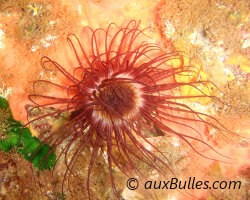
Cylinder anemone
(Cerianthus membranaceus)
(Cerianthus membranaceus)
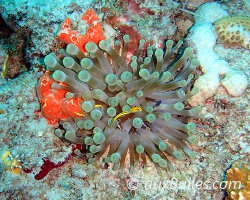
Giant caribbean anemone
(Condylactis gigantea)
(Condylactis gigantea)
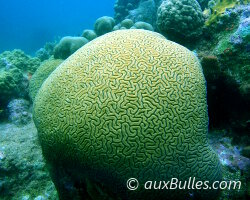
Labyrinthine brain coral
(Diploria labyrinthiformis)
(Diploria labyrinthiformis)
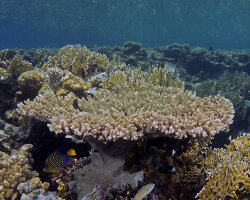
Pharaoh coral
(Acropora parapharaonis)
(Acropora parapharaonis)
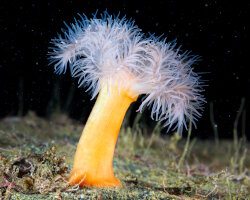
Plumose sea anemone
(Metridium senile)
(Metridium senile)

Purple gorgonian
(Paramuricea clavata)
(Paramuricea clavata)
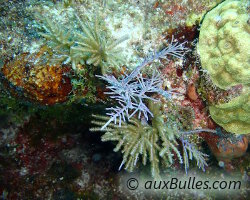
Slimy sea plume
(Antillogorgia americana)
(Antillogorgia americana)

Staghorn coral
(Acropora cervicornis)
(Acropora cervicornis)
Our latestUpdates

Friday, November 28th 2025
Disney Hollywood Studios, from Star Wars to Toy Story
Dive into the magical world of Disney's Hollywood Studios: Star Wars and Toy Story attractions and shows for the whole family.
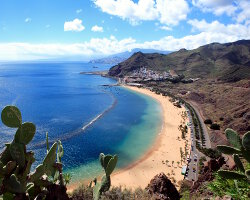
Wednesday, November 19th 2025
Tenerife island
Tenerife, the largest of the Canary islands, is a volcanic gem in the Atlantic ocean. It boasts an incredible variety of landscapes, from golden or black sand beaches to the subtropical forests of the Anaga mountains and the majestic Teide volcano, Spain's highest peak. With its picturesque villages, rich local culture and countless outdoor activities, Tenerife is a perfect destination for every type of traveler.
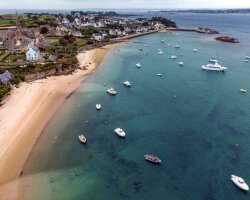
Saturday, November 15th 2025
Batz island
Located in the English Channel off the northern coast of Brittany, just a few kilometers from the town of Roscoff, Batz island is a true little haven of peace where you can enjoy its wild landscapes, unspoiled beaches and historical heritage.
Photo of the Day

Rouget barbet doré
(Parupeneus cyclostomus)
(Parupeneus cyclostomus)
